Andres Serrano
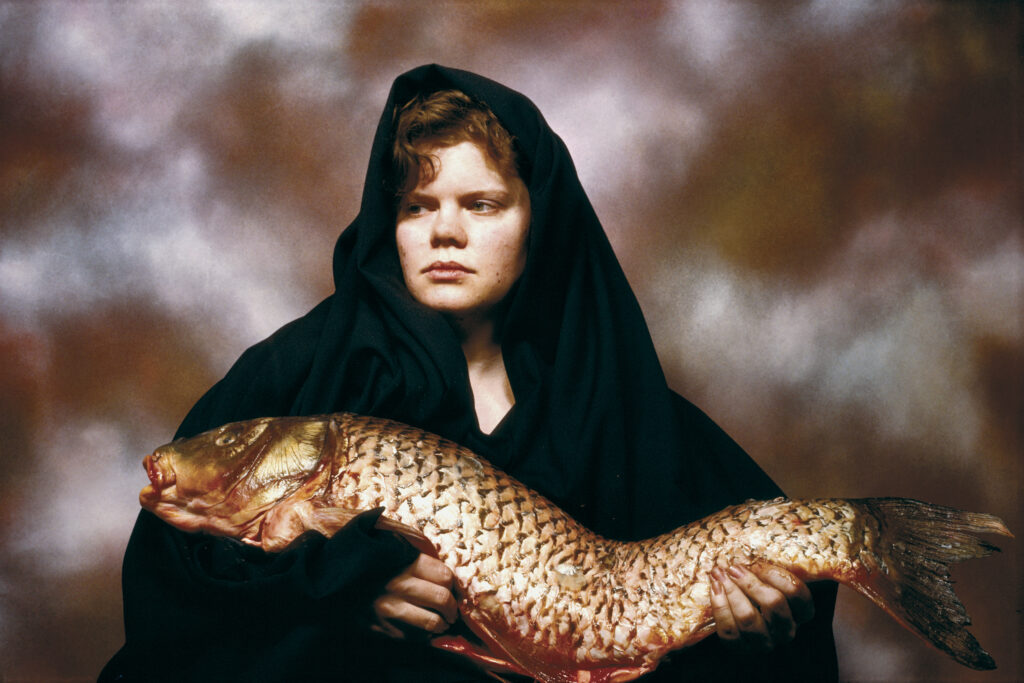
Andres Serrano, Pieta (Early Works 1984-1987)
The transgressive art of Andres Serrano, an introspective window into the past that continues to feed our present
Andres Serrano (born 1950 in New York, United States) has been recognised for his thought-provoking photographs and installations. Although the public might mostly recognise his famed Piss Christ, 1987 installation, featuring a small figurine of crucified Christ immersed in the artist’s own urine, the photographer has created an archive of series reflecting on societal themes ranging from death, religion to torture, racism and more. The scenes and subjects of Serrano’s painting-like photographs provoke the mind exactly like one would hope art does. Trained in sculpture and painting at the Brooklyn Museum Art school and inspired by Baroque and Italian Renaissance art, rituals and religious iconography infused by his Roman catholic upbringing, Serrano’s transgressive art is timeless. Representing the destitute and the marginalised (Residents of New York, 2014), sharing an authentic and personal take on Cuba (Cuba, 2012), portraying one of the most infamous leader of our generation (The Game: All Things Trump, 2018-2019) are only a few of the many themes and subjects Serrano explore. No matter the matter, Serrano manages to bring its beauty and inherent peace to the surface as the subject takes precedence in his work. There is a confrontational aspect to Serrano’s body of work and that is the success of his challenging work. Serving as a tool for introspection and engaging the viewer to see what it is not easy to view, Serrano’s art is an invite to reflect and not perpetuate the horrors of the past that continue to feed our present.
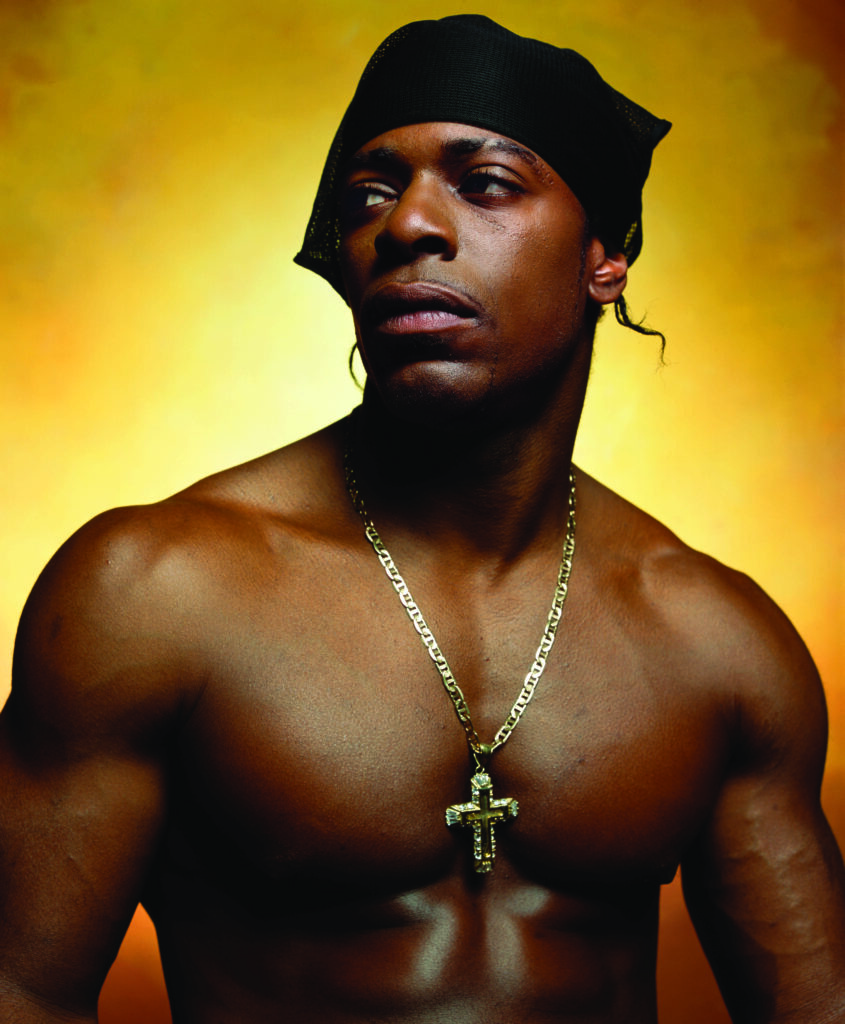
Andres Serrano, Lawrence Artis (America 2001-2004)
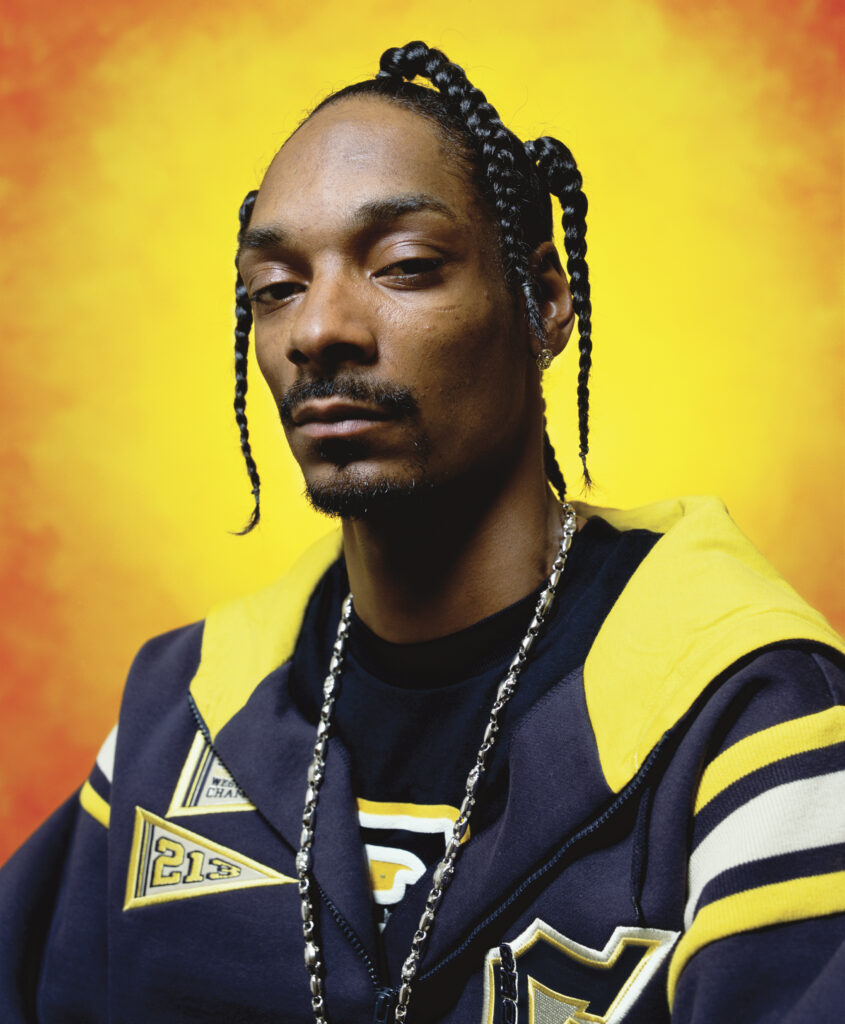
Andres Serrano, Snoop Dogg (America 2001-2004)
Andres, it is an honour to interview you. I have discovered your work a few years ago and have been fascinated ever since. Thank you very much for taking the time to participate, I am delighted to have you as part of this issue. I would like to start from the beginning. I was watching an interview with photographer Joel Meyerowitz (How I Make Photographs: Joel Meyerowitz in conversation with Amanda Hajjar) and he was reflecting on a life changing moment that made him see a realm of possibilities in front of his eyes: being on set with the great Robert Frank, in New York. Have you had an event like this, that changed the course of your life or initiated the beginning of your career?
I’ve had a few life changing moments, some good, some not. The problem with those moments is that you don’t always realize how profoundly they can affect you when they’re occurring. I used to see my life as a fast train not making any stops.
“The journey was more important than the destination. When you look back, you can’t say, “I should have done things different.” If you could, you would have, but you didn’t. I’ve fucked up more than once but I’m still here.”
There was one pivotal moment: when the Beatles came to America. I was 13. They were followed by the Rolling Stones and everyone else. Soon after that I discovered Bob Dylan and I was set for life.
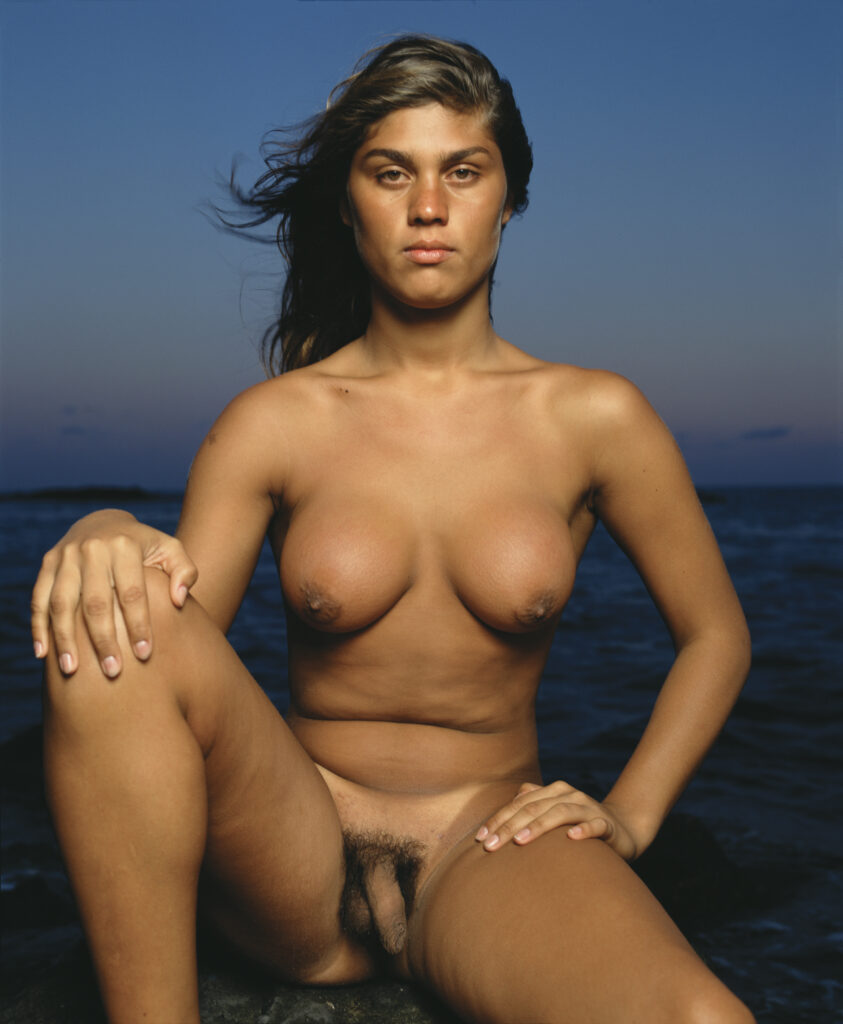
Andres Serrano, Alessandra (A History of Sex 1995-1996)
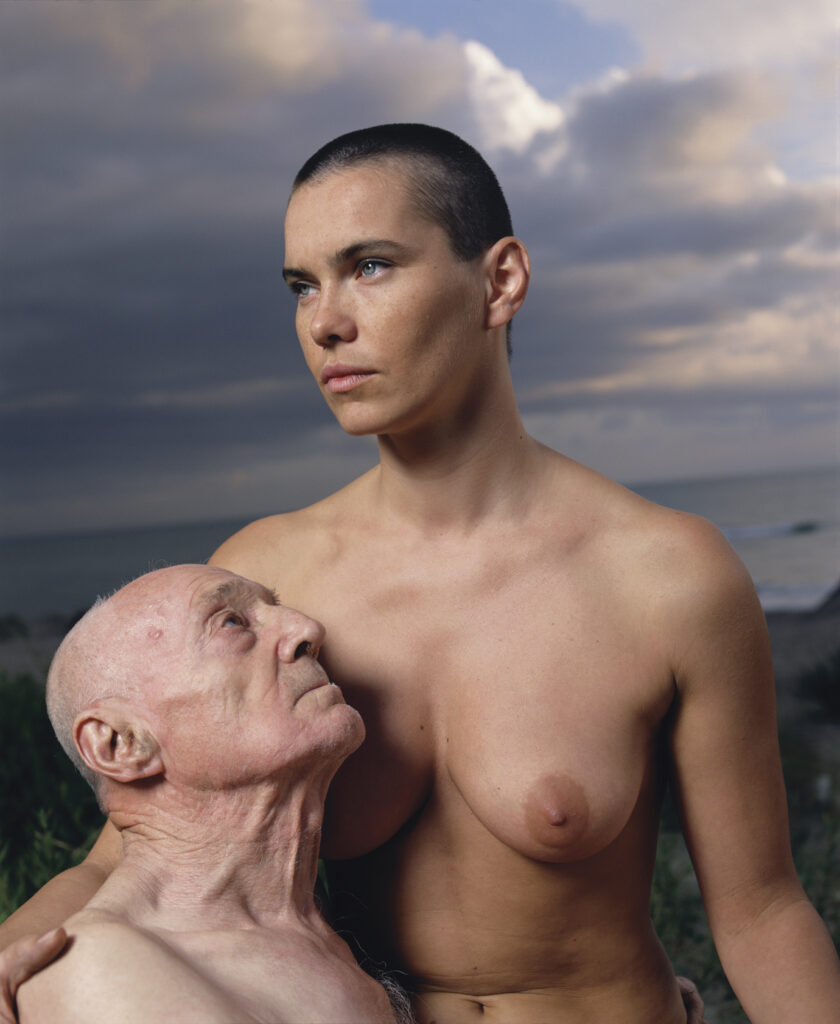
Andres Serrano, Antonio and Ulrike (A History of Sex 1995-1996)
You were born in New York, grew up as an only child raised by your mother. Your mother was born in Key West, Florida, was raised in Cuba and thus only spoke Spanish that you then had to learn at a young age. How did these different cultural identities impact you?
The good thing is that I had to learn Spanish at an early age. The bad thing was that I didn’t like my mother. We fought all the time. But that was also a good thing because she was tough so I had to be tougher. The only cultural identity problem I had was when Castro came into power and a kid in the fifth grade discovered my mother had been raised in Cuba. After that, the little prick would tease me by calling me “Castro” or “Cuban.” It would piss me off and also embarrass me. The Cuban Missile Crisis in 1962 was a big deal and no one wanted to be called “Castro” or “Cuban.”
Andres Serrano, Bedroom with Jesus (Cuba 2012)
60 years later you would think that kind of stigma wouldn’t matter but apparently it does. America still acts like Castro and Cuba are its biggest enemies. It’s easier to pick on someone you don’t need or fear than to stand up to the real strongmen.
When President Biden went to Saudi Arabia he went for oil, not to confront the Crown Prince about the murder of Jamal Khashoggi. And when he tried to bring it up the Crown Prince responded by telling him America wasn’t so clean either. What’s Biden going to say to that? “You’re wrong, we don’t kill innocent people or put children in cages.”
Andres Serrano, Magdalena, 2011 Courtesy of the artist and Galerie Nathalie Obadia, Paris/Brussels
I tell you what impacted me more than anything else. As a child growing up, my mother had several schizophrenic episodes. She would be fine for two or three years then she would have a nervous breakdown that would last a couple of weeks before she returned to normal. I was always trying to figure out what was going on in her head during those periods. It taught me to read people, to get a sense of what they were thinking and feeling.
Some people are obvious. They are what they appear to be. I would always shake my head when the political pundits on television would spend so much time trying to figure out what Donald Trump meant by the things he said. Trump is transparent. He means exactly what he says.
What was it like to travel there and discover it, later on, as an artist for Cuba, 2012 (exhibited in Brussels, 2014)?
I loved your documentation of the interiors of the houses and the portraits specially of the women. Did you feel attached to Cuba?
I loved Cuba when I finally went. I waited my whole life to go. I don’t like to travel except for work. I needed a reason to go to Cuba and the reason came when Jorge Fernandez invited me to the Havana Biennial. Actually, I think I asked him to ask me. I participated and at the same time I went to do some work. I felt very much at home there. I feel at home whenever I go somewhere to work.
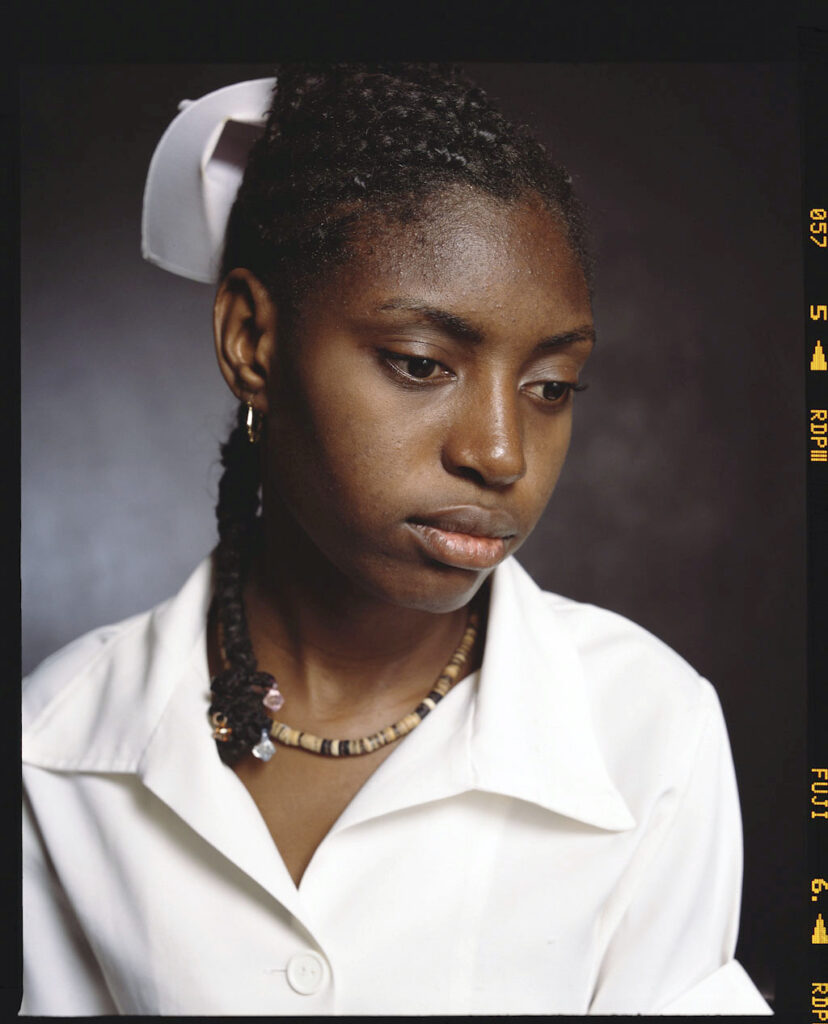
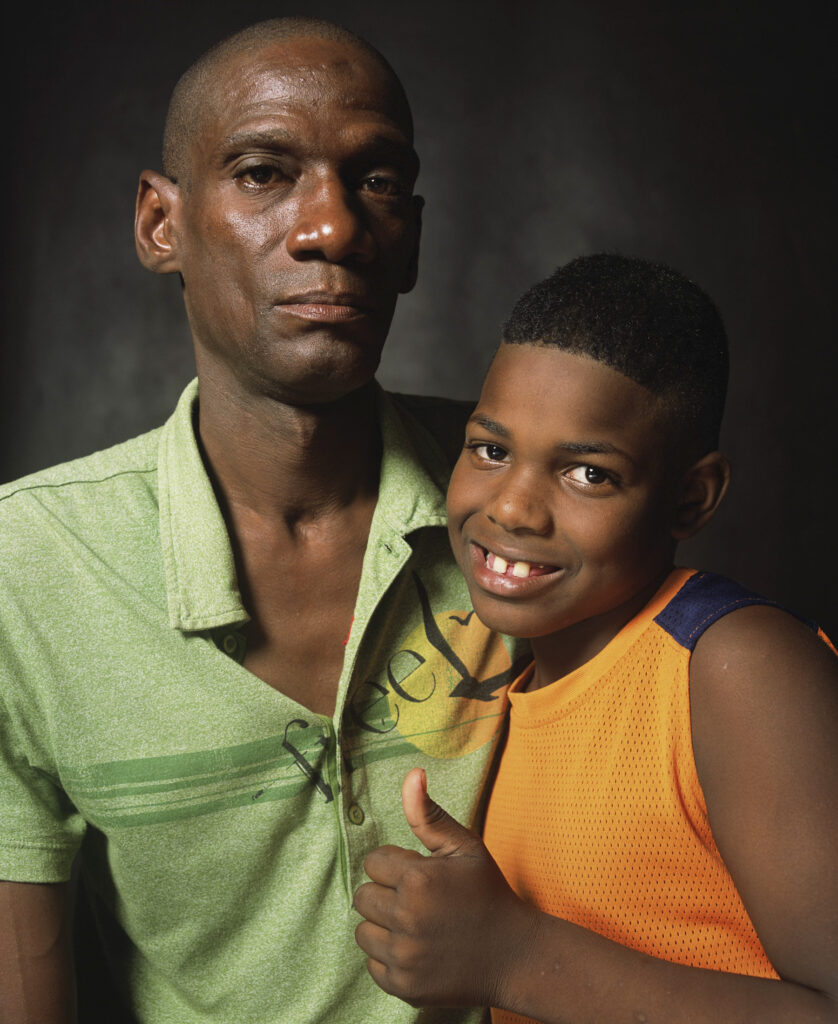
Andres Serrano, Cuba, 2012
The Cubans were very welcoming and I had a blast working day and night. Work, especially when it’s your work, gives you tremendous energy. I had my wife, Irina, my assistant from New York, some friends and comrades and a driver that drove us in a large SUV from one end of Cuba to the other. Talk about a great road trip! What I like best is driving in the middle of the night not knowing what you’re going to find. I don’t drive but I like being on the road, especially at night.
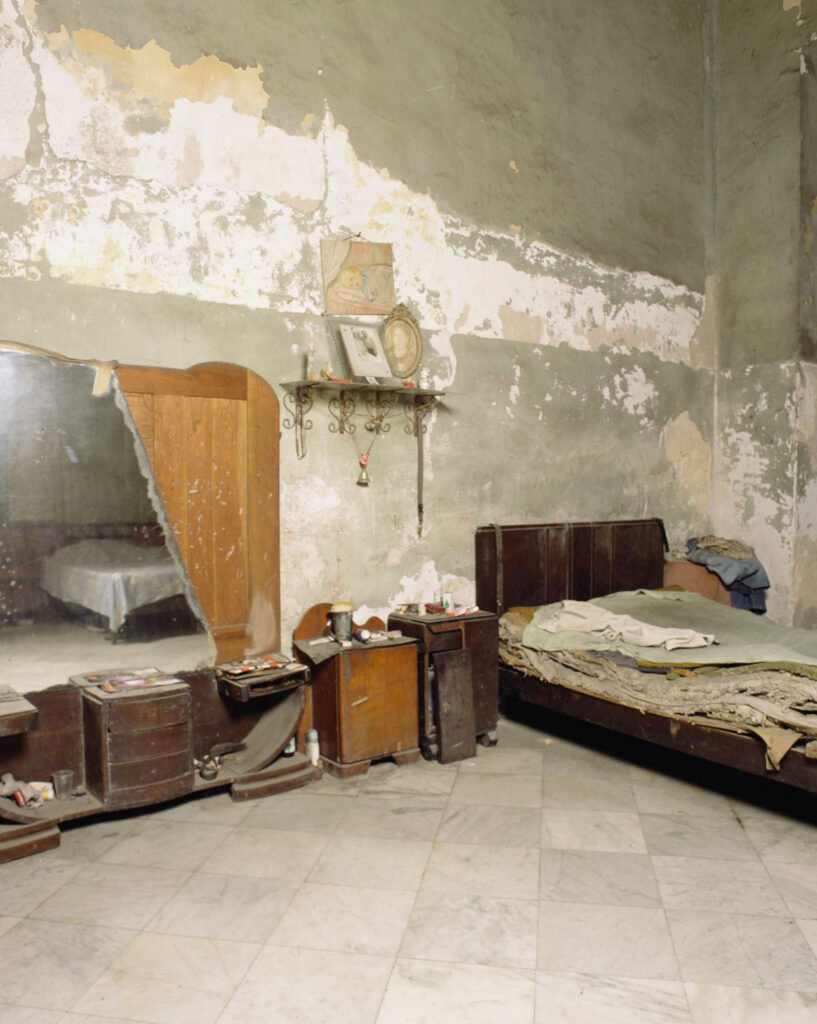
Andres Serrano, Cuba, 2012
The people are amazing! Cubans speak Spanish in a very precise way. They enunciate their words clearly. Once, in Havana, I saw a large stack of bread in a bakery that I wanted to photograph. I use lights and need time to set up for a shoot so I decided to go back the next day to photograph the bread. But the next day the bread was gone. They explained that the bread arrives early and would start selling immediately. So I bought all the bread in advance that was coming the following day. The next day, after I got to the bakery and took my picture, I told them, “Ok, now you can sell the bread again.”
I never talk much about myself in terms of ethnicity because it’s not important. All you need to know is that I was born and raised in New York City. But there are always people who like to get into your background, like it’s meaningful or the most important thing they can say about you. If you’re Black or White in America they don’t question you, but if you’re in a category that’s not easy for them to define, they try to define you anyway. My mother was born in America. I was born in America but they still want to place you somewhere else. I remember when we got back from Cuba I was telling someone about the trip. A couple of minutes into the conversation they say to me, “So what was it like going back to Cuba?” and I’m thinking, “Motherfucker, didn’t I just tell you I had never been to Cuba!”
“I don’t like to be called a photographer, but I have been called worst things.” At 17 years old, you studied painting and sculpture at the Brooklyn Museum art school. That background in painting can really be seen through your photography with the descriptiveness of the titles, the colours and the texture of the photographs. Why did you engage with photography as your preferred medium?
After two years at the Brooklyn Museum my scholarship ended and I didn’t have a studio to paint or sculpt. But I lived with a girl named Millie and she had a camera so I started taking pictures with Millie’s camera. I always knew I wasn’t a photographer but an artist who chose to take pictures as his art practice. I never went into a darkroom or printed my photographs (I still use film.) Photography has been a means to an end and that end has been to create art. I’ve always said I learned everything I know about art from Marcel Duchamp who taught me that anything, including a photograph, could be a work of art.
When I was in my twenties during the Seventies I wound up in the East Village taking and selling drugs. It was a period when I stopped taking pictures because I was not an artist at that point but a drug addict.
Andres Serrano, Blood Cross, 1985 Courtesy of the artist and Galerie Nathalie Obadia, Paris/Brussels.
I can’t say it was a bad time because I was having a good time. But it stopped being a good time when the people around me started dying and I knew it was time for me to leave. If I had gone from the Brooklyn Museum Art School to being an artist I probably would have been a different artist although I can’t imagine how. Everything is going to have an impact on you one way or another but you might stay the same.

Andres Serrano, Caged Meat, 1987
Courtesy of the artist and Galerie Nathalie Obadia, Paris/Brussels.
The 1980s in New York, what did this mean as an artist in terms of starting out, getting recognised by galleries, having shows etc? How is it now?
The 1980s in New York was an exciting time for me. I met and married my first wife, Julie Ault, in 1980 and got back into art shortly after that. Julie had just formed an artist collective called Group Material along with Tim Rollins, her friend from Maine. Group Material was a group of several artists who mounted group exhibitions of other artists’ work that addressed social and cultural issues such as AIDS, consumerism and democracy. I was never a member of Group Member. Julie was doing her thing and I was doing mine, but it was through Julie that I became aware of what some artists were doing. I met some great artists like Leon Golub and Nancy Spero who were always super nice. They were very encouraging to other artists.
It was Julie, who, upon meeting Felix Gonzales-Torres invited Felix to join the group. Felix didn’t need Group Material to make it but Julie recognized his talent early. Back then I wasn’t thinking about the art world, I was just doing my work. Julie and I lived on East 10 St. and when the art scene moved to the East Village several galleries, including Jay Gorney Gallery and P.P.O.W., came to our block. Interestingly, art, punk, graffiti, new wave music and street culture all came together in the East Village. Even the Post-Modernists were there. The first time I saw Jeff Koons work was at International With Monument on East 7 St. where Jeff showed his basketballs in water.
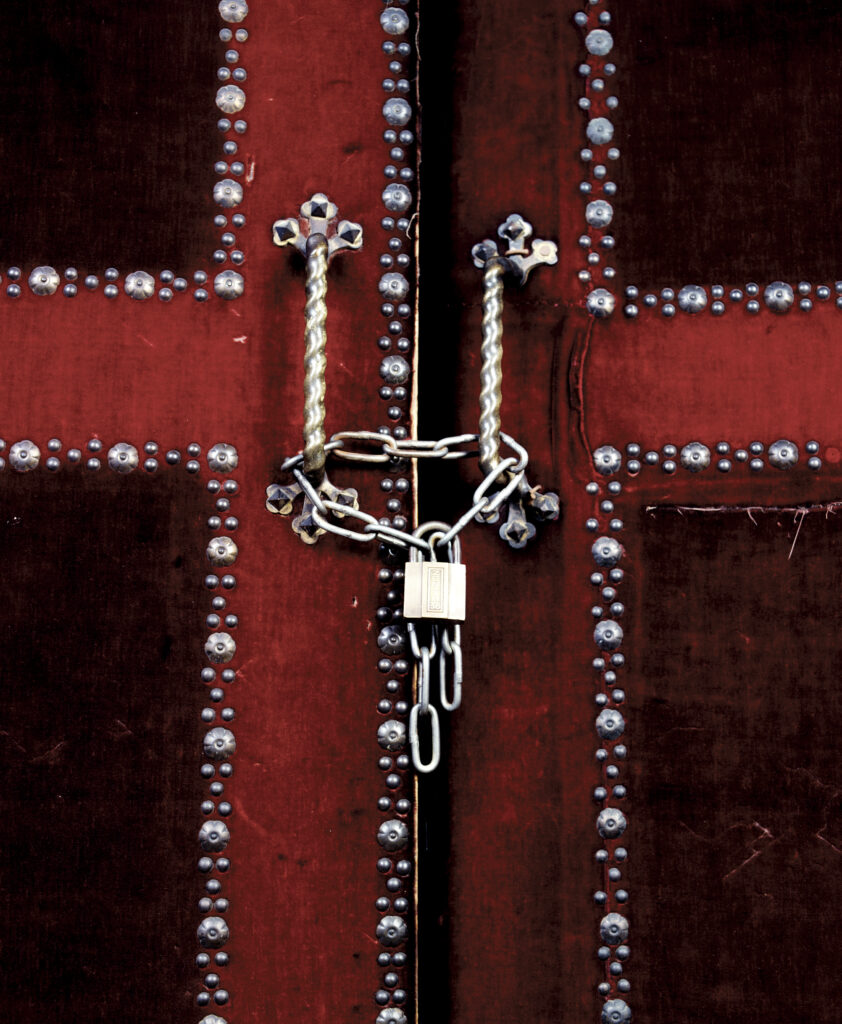
Andres Serrano, St. Clotilde II, Paris 1991
Courtesy of the artist and Galerie Nathalie Obadia, Paris/Brussels
The Eighties were also important for me for another reason. It was when rap and hip-hop appeared. The first time I heard Rapper’s Delight I knew it was something. I spent the whole decade listening to and collecting rap records. Music has always moved me more than art. Art does not touch me in the same way music does and rap was riveting.
Julie and I separated after ten years. I spent the Nineties going to clubs and listening to dance and house music at night and creating pieces during the day.
Things are different now. People come out of art school knowing what galleries they want to get into. There’s Instagram and social media. I’m not on social media. I still use a flip phone. If it wasn’t for Irina,
I wouldn’t have any idea of what’s happening in the art world. I still don’t. I think art and culture is now defined by algorithms.
Controversy and provocation play a huge part in your work. Was that something intentional?
With Piss Christ,1987 for instance although some viewers may see it as a blasphemy, it is important to note the attention brought to the act of crucifixion and thus dying. As Sister Wendy says in an interview :’An abuse shouldn’t take away its use’ (‘Sister Wendy in Conversation With Bill Moyers’ 1997). As a religious person, how does your faith interact with your art?
I’ve always thought that being an artist was the least controversial thing I’ve done. My life has been much more intense than my work. I remember when I first heard Dylan sing “And if my thought-dreams could be seen, they’d probably put my head in a guillotine, but it’s alright, Ma, it’s life, and life only,” and I thought, “That’s ridiculous. How could anyone get mad at you over what you’re thinking?”
Andres Serrano, Piss Christ, 1987
Courtesy of the artist and Galerie Nathalie Obadia, Paris
I was born and raised a Catholic and have been a Christian all my life but who cares? Certainly not the people who label you “anti- Christian and blasphemous.” There are people who think only they know what it means to be a Christian. You can’t talk to these people because they’re convinced that only they know the answer. It must feel good to tell other people how to live their lives. Personally, I don’t have that luxury or want the responsibility.
I like what Sister Wendy once said about me in an interview. “Serrano is not a terribly gifted young man but he tries.” I was in my late forties at the time so I was flattered that Sister Wendy called me a “young man.” I also liked when Senator Jesse Helms got up on the Senate floor and said, “Andres Serrano is not an artist. He’s a jerk who’s taunting the American people.”
Piss Christ made me think about the installation of Italian artist Maurizio Catalan, The three hanging kids (Untitled, 2004) that had been taken down almost immediately by the Italian authorities. When asked about the work, Catalan wondered if the real tensions and horrors of contemporary life should not shock us more. The Klan, 1990, Torture, 2015 and Infamous, 2019 are very confronting for instance, to the tainted history of the world. In your eyes which role art should play in society?
Art should play the role it wants to. It’s not for me to tell the art world what to do or not do. They wouldn’t listen to me anyway. I’ve never been a political or activist artist although there could be some element of that in my work.
“I’d rather let the work speak for itself. My work is a mirror that’s open to interpretation. People see what they want to see.”
Half the people voted for Biden and almost half the people voted for Trump. It’s up to you to decide which side is more fucked up. I never voted in my life until I voted for Obama. Twice. In the last election I didn’t vote for Biden. I voted against Trump. If a tomato had been running for president I would have voted for that tomato.
Theoretically, Democrats talk a good game but often can’t deliver. On a practical level, the Republicans won’t raise your taxes. People try to shame you into voting. As an American you have the right to vote and you have the right not to vote. Even the Supreme Court sometimes says, “Let’s sit this one out.”
Since the theme of this issue is IN OUR WORLD, which themes would you wish to see more tackled in the art world?
The art world is not the real world so it’s hard for me to see how it could tackle anything other than itself. There’s a feeling of sameness in the air, same people, same faces, same chatter, same agenda. It pretends to care and promote inclusivity but that inclusivity only includes the people who fit the demographics they’re looking for. You can’t deviate from the status quo otherwise you’re left out in the cold.
I left Paula Cooper Gallery in New York in 2008 and since then I’ve been a stranger in my own country.
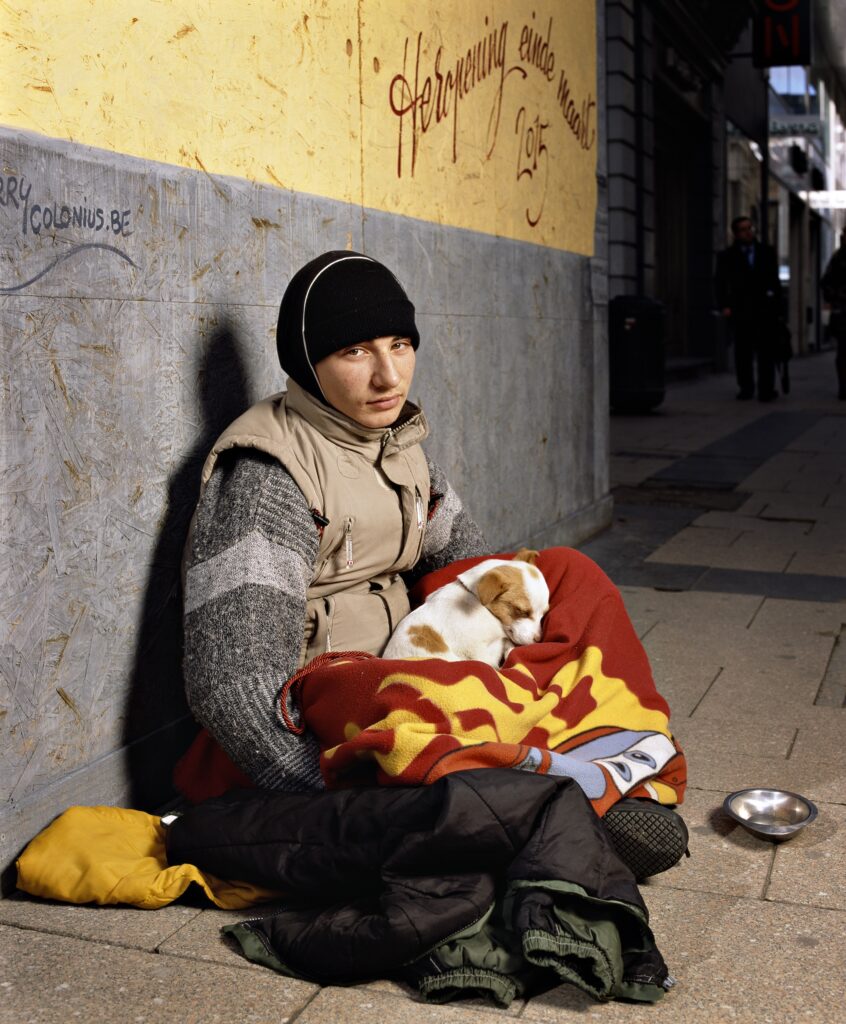
Andres Serrano, Denizens of Brussel. Cristo, 2015
Courtesy of the artist and Galerie Nathalie Obadia, Paris/Brussels
I’ve had a great many museum exhibitions in Europe and around the world thanks to Nathalie Obadia and Yvon Lambert. I was even appointed a Chevalier in The Order of Arts and Letters in 2017.
But I’ve only had one museum exhibition in America and that was in the 90’s. I recently saw Adam Weinberg, Director of The Whitney Museum of American Art, at the Whitney Biennial and told him, “You know I’m an American artist and I’ve never been in the Whitney Biennial. I guess you’re waiting for me to die before you show me.” Adam laughed and said, “We’ll do something long before that.”
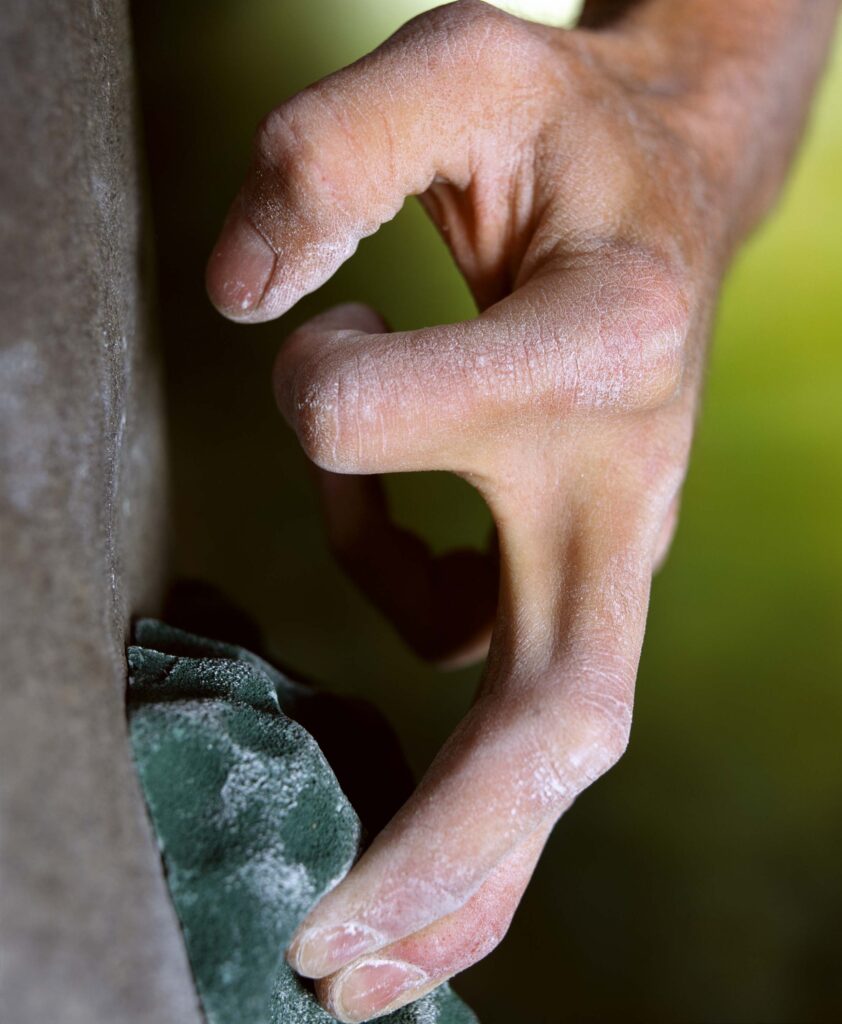
Andres Serrano, Chris Sharma, Rock Climber, 2006
Courtesy of the artist and Galerie Nathalie Obadia, Paris/Brussels
When I was a junkie in the East Village I felt somewhat distant from the people around me. “I am with you but I am not like you.” I still have that feeling.
Could you talk about your breathtaking series The Morgue, 1992 and those portraits. What was the reason behind the series and how was that experience considering that you were photographing people who had passed away. How was the interaction between them, yourself and the camera?
The inspiration behind The Morgue series was simple. I wanted to look at death. My interaction or involvement with the dead was as an artist who wants to find that inner peace that comes from an art that gives you spiritual and aesthetic comfort; the thing that brings stillness and tranquility. You could hear a pin drop in my work. It’s a moment frozen in time. When a song is right, when a picture pleases, it makes you feel like everything is right with the world. There’s beauty and grace everywhere, even in death.
With The Morgue, 1992, I think the titles indicating the causes of death in a way engage the viewer to wonder about the personal lives of these people. By this interrogation, it adds texture and life again to the stillness of death. That’s why I dont feel a sense of voyeurism but dignity and beauty. You have mentioned before that you are passing through. Could you delve into that?
The truth is we’re all passing through going from one thing to another, one place to another. I always title my work in such a way as to describe what you’re looking at. In the case of The Morgue, the cause of death tells you what brought these people to this place and everything I know about them.
“People change and in death they change even more. But the sense of humanity lingers on even after one’s demise.”
It was this essence that I wanted to capture. The soul and spirit of a person cannot be seen but it can be felt.
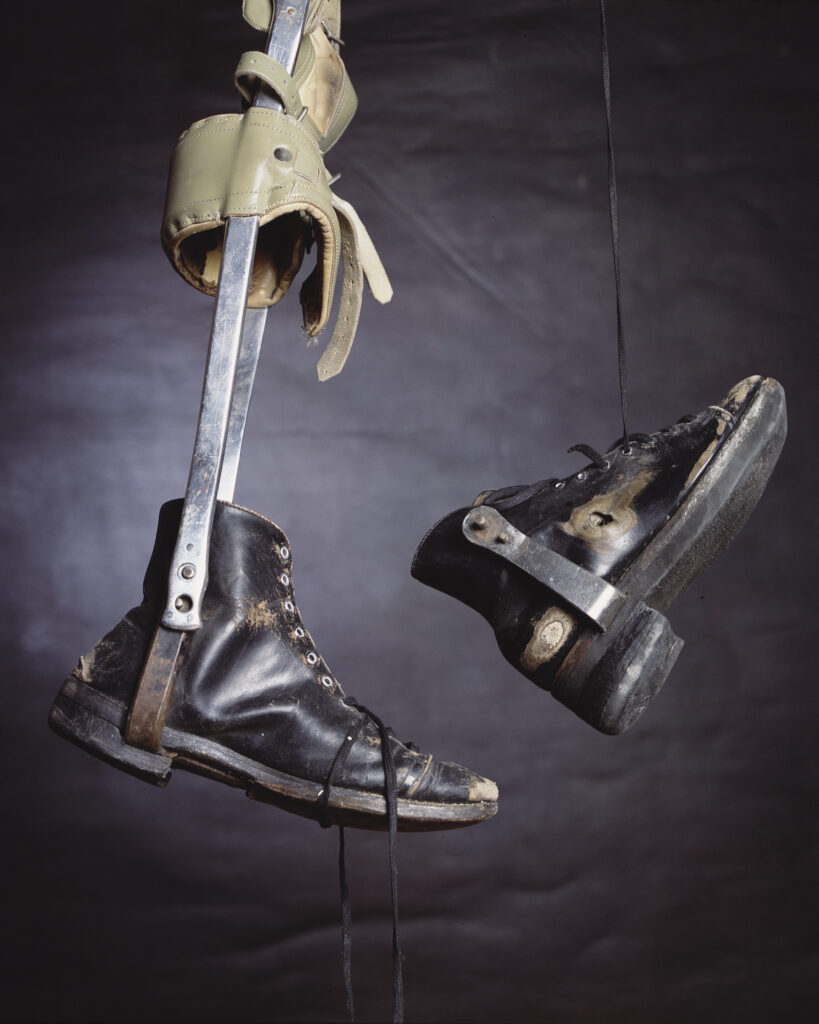
Andres Serrano, Body Parts, 2012
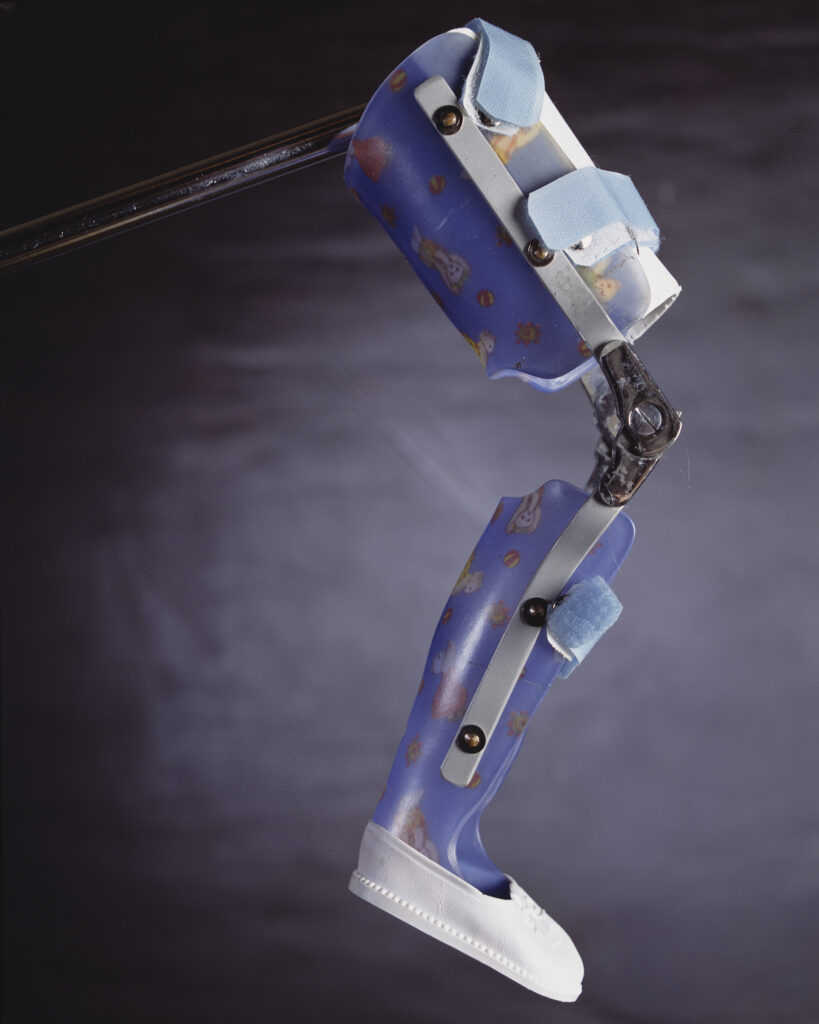
Andres Serrano, Body Parts, 2012
Could you talk about your collaboration with Supreme and how did that unfold? Which other brands would you be interested in collaborating with?
Supreme came to me and said they wanted to do something with my work. They had ideas and designs for sneakers, sweatpants, sweatshirts, hoodies and a skateboard with my work. It was an easy collaboration. All I had to do was say yes. In 1996, Kirk Hammett and Lars Ulrich from Metallica came to me and asked to use one of my images for a new album they were coming out with called, Load.
They following year they came out with Reload, the follow up to Load and again asked for one of my images. They also made t-shirts and other merchandise with my work. I’m always flattered and open to collaborations of my work with good artists and brands. I’m very proud of Load and Reload and the Supreme collection.
I’d like to collaborate with Gucci, Dior or Balenciaga. Sometimes the design houses are more cutting edge than the galleries. They know it pays to think outside the box. When people like you, they like what you do and these brands are well liked by their clients. The reason they’re liked is because their goods are well made and of good design. People always look forward to the new collections.
Do you have a favorite piece/body of work that you’ve realised?
I always have my favorites. I used to call them, “masterpieces,” the images from a particular series that stood out for me. There are many such images from The Morgue, The Klan, Immersions…etc.
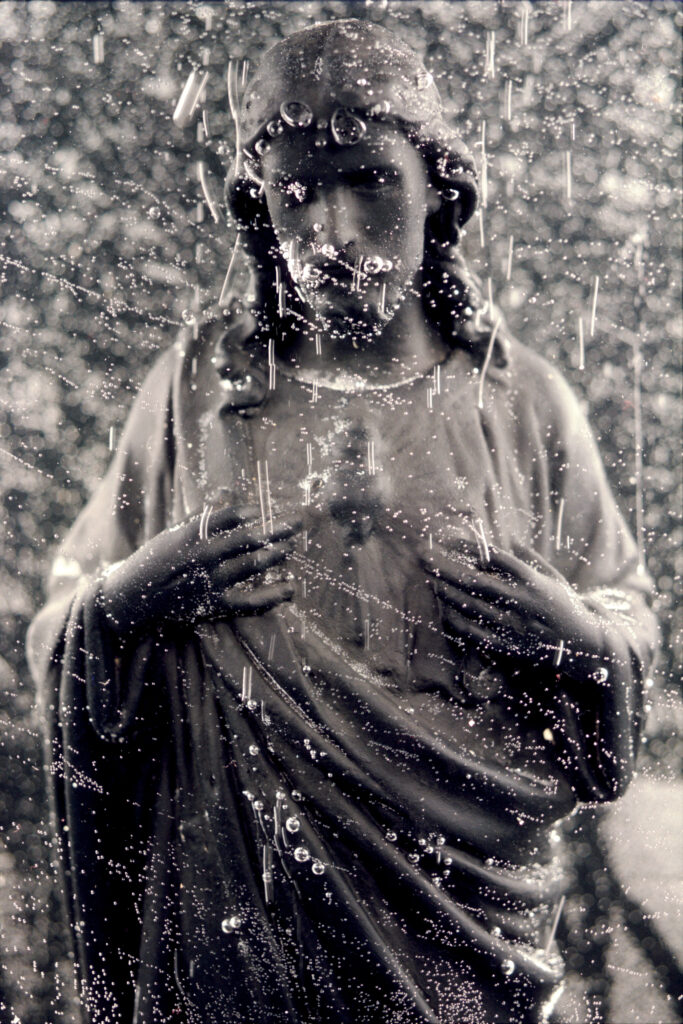
Andres Serrano, Black Jesus (Immersions 1987-1990)
Piss Christ did not stand out for me until it was controversial and then it became one of my favorites! The favorites usually get a lot of attention.
Your new series, The Robots, 2022 will be shown this November in Paris at Nathalie Obadia gallery. Could you talk about the series?
The Robots was inspired by NFTs and the Metaverse because before the Metaverse, there were robots. I like working with real things, not reproductions. And when I decided to create portraits of robots I went looking for vintage robots. I bought them on Ebay and other auctions. They’re mostly from the 60’s, and 70’s with a few from the 80’s. Some of them are rare and desirable.
The Robots is about race, childhood, science, science fiction and human nature. The word robot was coined by Karel Capek, and appears in his 1920 play, RUR or Rossum’s Universal Robots. It derives from the Old Church Slavonic word, “rabota,” which means “servitude or forced labor.” There are references to the work of Jean-Michel Basquiat, Jeff Koons, Kaws and Andy Warhol in The Robots, intentionally and unintentionally.
I did enough work for several exhibitions because as I started making them I realized they could be a book of robots. There are all kinds of robots: Japanese robots, European robots, black robots, white robots, …. Some of my favorite pictures are those of the very simple children’s robots. I love Mickey The Robot, Mr. Rembrandt Robot and Chuckling Charlie The Laughing Robot. All of these will be included in the exhibition at Nathalie Obadia Gallery.
Andres Serrano, KO Yoshiya High-Wheel Robot (The Robots, 2022)
Andres Serrano, Mickey the Robot (The Robots, 2022)
I once told Leon Golub about a bad review I got in The New York Times. I said to Leon I didn’t want to take it personally but it hurt my feelings. He said to me, “You should take it personal because when they criticize your work, they criticize you.” Leon was right. I am The Robots!